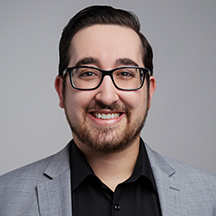

What to Know About Group Exercise for People with Neurologic Disorders
by Guest Author
Pacific Neuroscience Institute’s experts explain the benefits of group exercise for people with neurologic disorders .
Exercise and Multiple Sclerosis
If she heard it once, she heard it a hundred times. “Exercise,” says Darlene Feigen, who was diagnosed with Multiple Sclerosis (MS) in 2016. “Everyone kept telling me I had to exercise. But I’m not an exercise person!”
Feigen eventually relented. “I got tired of hearing it from my doctor,” she says. She went to a few of the large gyms near her home in Oak Park, CA, but didn’t last long. “They weren’t for someone like me,” she says. They seemed more suitable for people in better shape than Feigen.
Frustrated, she sought help from Esta McIntyre, a trainer her husband had met at a networking group who, like Feigen, was a native New Yorker. “I needed someone to kick my you-know-what and still make it fun,” says Feigen, now 52. “Because Esta is from New York, I knew she could do that.”
McIntyre, a certified fitness trainer and group fitness instructor, was not so sure initially. “I’d never worked with anyone with MS,” she says. But she read up on the condition and got advice from a former bodybuilder, David Lyons, who has MS and has developed training protocols for others with the disorder.
What is Multiple Sclerosis?
For people with Multiple Sclerosis – a disease in which the immune system attacks the brain, spinal cord and optic nerves – exercise and physical activity can be variously challenging. However, being physically active is one of the most beneficial adaptations to a lifestyle with MS.
In fact, it is recommended that people with MS should move for at least 150 minutes a week. Exercise improves many symptoms of MS, including fatigue, spasticity, depression, weakness and balance issues, as well as cognitive impairment.
“I often counsel my patients to think of living with MS as a marathon. It takes planning, fortitude, and endurance,” explained Barbara Giesser, MD, an MS specialist at the Pacific Brain Health Center at Pacific Neuroscience Institute (PNI) in Santa Monica, CA.
PNI’s approach to the care of persons with MS combines state-of-the-art diagnostics and treatments with evidence-based recommendations for lifestyle practices. This comprehensive strategy treats the whole person, with the goals of controlling disease activity while optimizing function and quality of life. The MS clinic at PNI is recognized as a “Partner in Care” of the National Multiple Sclerosis Society.
Bringing exercise to others

Feigen and McIntyre worked together one-on-one until some people from Feigen’s MS support group asked if they could join. Before long, McIntyre was holding a 60-minute class with Feigen and five other women twice a week at her studio in Thousand Oaks, CA. McIntyre included a variety of movements modified for people with neurologic disorders. She also wanted to incorporate dance moves. “But I knew a Zumba class was too strenuous,” says McIntyre. Instead, she taught a seated tap dance class. “Some of the women were standing, some were seated, and they had to memorize a sequence of movements. They got to listen to great music, and we did a lot of laughing. It was therapeutic in so many ways.” McIntyre received a grant to teach the class and reached out to a tap dance company, which donated equipment like floors and tap shoe overlays that prevent skidding. The class was free for her students.
The benefits of group exercise
The camaraderie of group exercise—whether aerobics in a fitness center, tap dancing in a studio, or weight lifting over Zoom—is one of the reasons it’s so popular. “A group class can be much more motivating than exercising alone,” says neurologist Melita T. Petrossian, MD, Director of the Pacific Movement Disorders Center at Pacific Neuroscience Institute.
A lack of classes geared for specific neurologic conditions shouldn’t be a deterrent. “Even if you can’t find a class dedicated to, say, stroke recovery or postural orthostatic tachycardia syndrome (POTS), maybe you can attend a class for seniors,” says Ryan Glatt, MS, CPT, NBC-HWC, a board-certified health coach and personal trainer with the Pacific Brain Health Center at Pacific Neuroscience Institute in Santa Monica, CA. “It’s still movement, it’s still exercise, and done correctly, it will still help you.”
Dr. Petrossian mentions another thing worth watching for: “Novelty in exercise is important—incorporating things that are new into the routine,” she says.
Before beginning any exercise program, discuss it with your physician, who may have advice on how to get started and may be able to refer you to a physical therapist or personal trainer for further guidance or to the local hospital, which might conduct classes.
Finding your exercise class

YMCAs and community centers may offer free or low-cost classes, especially for seniors and people with neurologic conditions. Libraries, adult-ed programs, and even churches also may have them. Check with your employer as well, especially if cost is a concern, as your employer may provide fitness-related benefits. Review your employee handbook or speak with someone in human resources.
Also, check your insurance coverage. “Some commercial insurances offer flexible spending accounts or health savings accounts (HSAs), which can be used for at least partial reimbursement of certain health and fitness services,” says Glatt. If your doctor provides a referral, he says, “the likelihood of coverage may increase.” Many Medicare Advantage and Medigap plans cover at least part of the cost of health club memberships or programs for seniors.
Plenty of patient advocacy groups, like the National Multiple Sclerosis Society, the Michael J. Fox Foundation, and the Myasthenia Gravis Foundation of America, coordinate free online exercise classes tailored for people with neurologic disorders.
If you’re in a support group for people with your neurologic disorder, that can be a resource for exercise classes too. You can ask others in the group if they know about any, or perhaps the support group itself organizes in-person and/or online fitness programs.
For Feigen, McIntyre’s class provides the exercise she needs—and the socializing she loves. That and the improvements she’s seen in strength, stamina, and balance are the reasons she plans to continue exercising with McIntyre on Zoom now that McIntyre has relocated to Ivins, UT. “I just love being with her and the other women in the class.”
While it might take a little research, Feigen encourages others with neurologic conditions to seek out a class. “There’s probably an Esta McIntyre out there for everyone,” she says.
Santa Monica: 310-582-7433
Article adapted from original publication on Brain and Life.com.
About Barbara Giesser, MD

Barbara Giesser, MD, is a Multiple Sclerosis neurologist at Pacific Neuroscience Institute’s Brain Health Center. She has a prolific career spanning over 35 years. Her approach to the diagnosis and management of people with MS combines state-of-the-art diagnostics and a personalized medication plan for each patient with an emphasis on integrating lifestyle and wellness strategies into the neurologic treatment plan.
About Melita Petrossian, MD

Melita Petrossian, MD, is a fellowship-trained neurologist and movement disorders specialist and is the Director of the Pacific Movement Disorders Center located at Providence Saint John’s Health Center and Providence Little Company of Mary Medical Center Torrance. Dr. Petrossian’s clinical interests and expertise are in movement disorders such as Parkinson’s disease (PD), tremor including essential tremor, dystonia, gait disorders, ataxia, myoclonus, blepharospasm, hemifacial spasm, Meige syndrome, spasticity, tics, and Tourette’s syndrome
About Ryan Glatt, MS, CPT, NBC-HWC

Ryan Glatt, MS, CPT, NBC-HWC, is a personal trainer and board-certified health coach with a specialty focus in brain health with over a decade of experience in the health & fitness industry. He currently works alongside clinicians and researchers to implement cognitively-enhanced and comprehensive exercise and lifestyle interventions at the Pacific Brain Health Center in Santa Monica, California.
Related Links:
Last updated: July 9th, 2024
